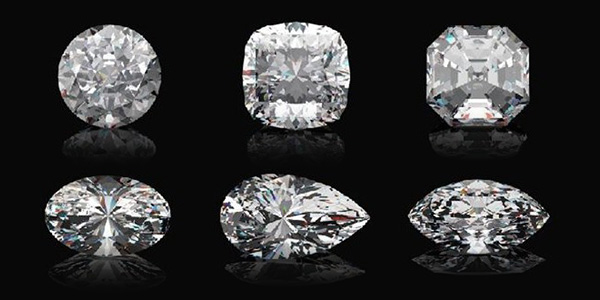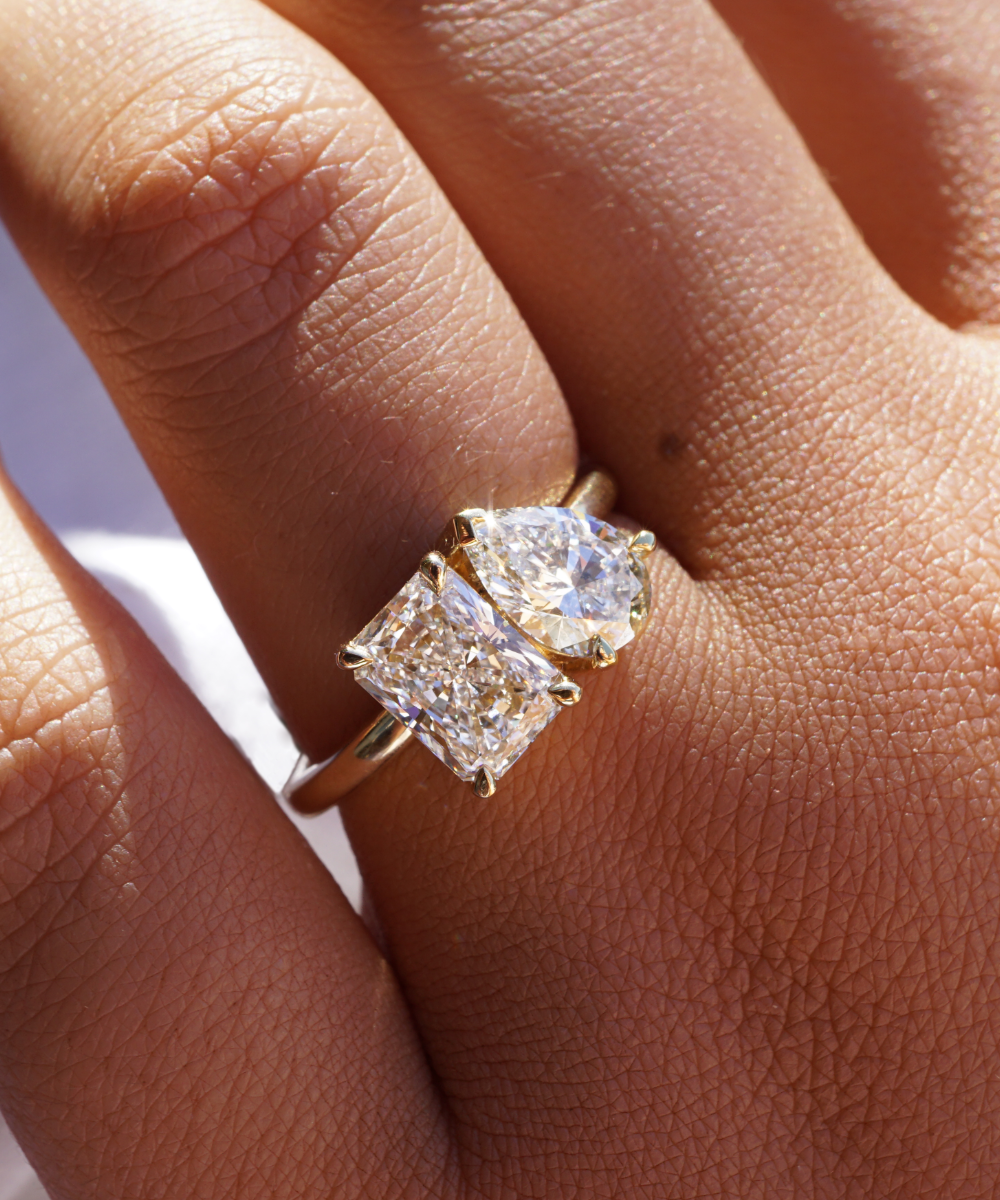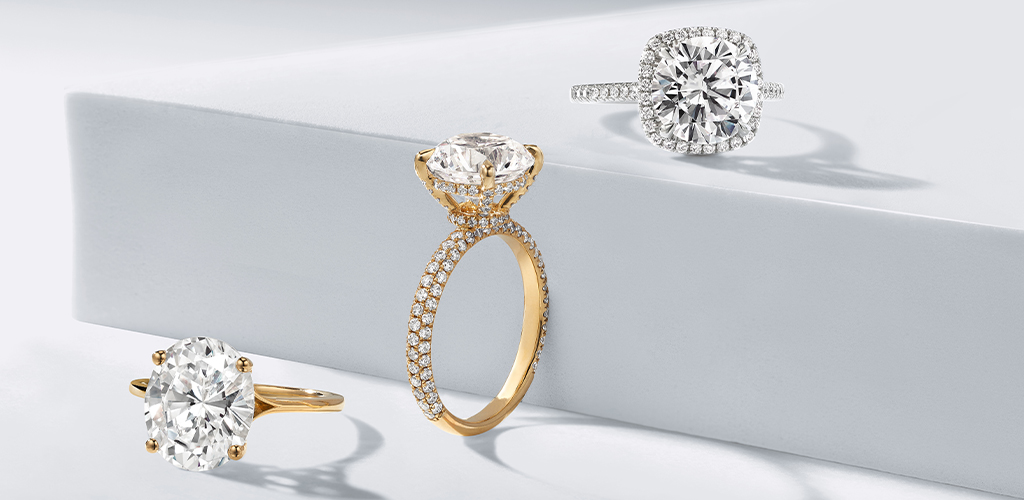
When it comes to choosing the perfect gemstone for engagement rings or other fine jewelry, two of the most popular options are moissanite and diamonds. Both stones are known for their beauty, brilliance, and durability, but they differ in various aspects. This article delves into the differences between moissanite vs diamond, helping you make an informed decision about which is the better choice for your jewelry needs.
Understanding Moissanite and Diamonds
Moissanite vs diamond – while both are brilliant and eye-catching, their origins and compositions are vastly different. Moissanite is a rare gemstone that was discovered by French chemist Henri Moissan in 1893. It is composed of silicon carbide, a compound that gives it a remarkable sparkle and brilliance. On the other hand, diamonds are composed of carbon, and their formation occurs under extreme pressure and heat deep within the Earth’s mantle.
The key difference lies in the material itself. While diamonds are the hardest known substance on Earth, moissanite is also a durable gemstone, though slightly softer than diamonds. Understanding the physical properties of each stone is essential when comparing moissanite vs diamond.
Cost Comparison: Moissanite vs Diamond
One of the most significant differences between moissanite and diamonds is the price. Moissanite is significantly more affordable than diamonds, which makes it an attractive option for those looking for a beautiful stone without the hefty price tag associated with diamonds. While diamonds can be quite expensive, especially for larger stones or those with higher quality, moissanite offers a similar visual appeal at a fraction of the cost.
When considering the cost of moissanite vs diamond, it’s essential to weigh factors such as size, cut, and overall quality. Moissanite’s affordability allows consumers to purchase a larger, more brilliant stone for the same budget that might only cover a smaller diamond.
Sparkle and Brilliance: Moissanite vs Diamond
In terms of sparkle and brilliance, moissanite vs diamond often sparks a debate. Moissanite is renowned for its exceptional brilliance, even more so than diamonds. This is due to its higher refractive index, which causes moissanite to reflect light in a way that makes it appear more sparkling and vibrant than a diamond. As a result, moissanite stones can exhibit a rainbow-like effect in certain lighting conditions, making them appear dazzlingly bright.
Diamonds, while incredibly brilliant, tend to have a subtler sparkle compared to moissanite. This difference in brilliance may be an essential consideration for those who prioritize the sparkle of their gemstone. For those who prefer a more understated, classic brilliance, a diamond might be the better choice.
Durability and Hardness: Moissanite vs Diamond
When it comes to durability, the comparison between moissanite vs diamond becomes quite interesting. Diamonds are known for their unmatched hardness and are rated 10 on the Mohs scale, making them the hardest natural material on Earth. This makes diamonds resistant to scratches and ideal for everyday wear, particularly in engagement rings that will be worn frequently.
Moissanite, while not as hard as diamonds, is still an incredibly durable gemstone. It ranks 9.25 on the Mohs scale, meaning it is highly resistant to scratching and wear. While it may not be as hard as diamonds, moissanite still offers excellent durability and is suitable for daily wear, making it a viable alternative to diamonds for engagement rings and other fine jewelry.
Ethical Considerations: Moissanite vs Diamond
An increasingly important factor for many consumers when deciding between moissanite vs diamond is the ethical implications of their purchase. Diamond mining has long been associated with environmental damage, human rights abuses, and unethical labor practices. As a result, many consumers are choosing alternative gemstones like moissanite, which is lab-grown and does not contribute to the negative impacts of traditional diamond mining.
Moissanite is often created in a laboratory setting, which ensures that it is free from the ethical concerns related to diamond mining. Additionally, lab-created moissanite can be a more sustainable option, as it reduces the demand for natural resources and minimizes environmental harm. For those concerned with ethical sourcing, moissanite may be the better choice.
Longevity and Value Retention: Moissanite vs Diamond
While diamonds are considered a traditional symbol of luxury and have historically been associated with higher value retention, moissanite does not have the same long-term value. Diamonds are rare and hold their value over time, often being seen as an investment in addition to being a beautiful gemstone. Moissanite, however, is not as rare as lab diamonds, and its resale value is generally lower. This can be an essential factor to consider when comparing moissanite vs diamond, especially for individuals looking at the long-term financial value of their gemstone.
Though moissanite may not retain its value in the same way diamonds do, it is still a durable and stunning gemstone that can be cherished for a lifetime. Many people appreciate the affordability and beauty of moissanite without worrying about its future resale value.
Conclusion: Moissanite vs Diamond
Ultimately, the decision between moissanite vs diamond comes down to personal preference, budget, and ethical considerations. Moissanite offers remarkable brilliance and durability at a significantly lower cost, making it an excellent choice for those looking for a beautiful and affordable alternative to diamonds. However, diamonds are timeless, rare, and hold their value, making them a classic and prestigious option for those seeking a more traditional gemstone.
Both gemstones have their unique qualities, and the best choice depends on your specific needs and priorities. Whether you choose moissanite or diamond, both stones will undoubtedly add beauty and elegance to your jewelry collection.




